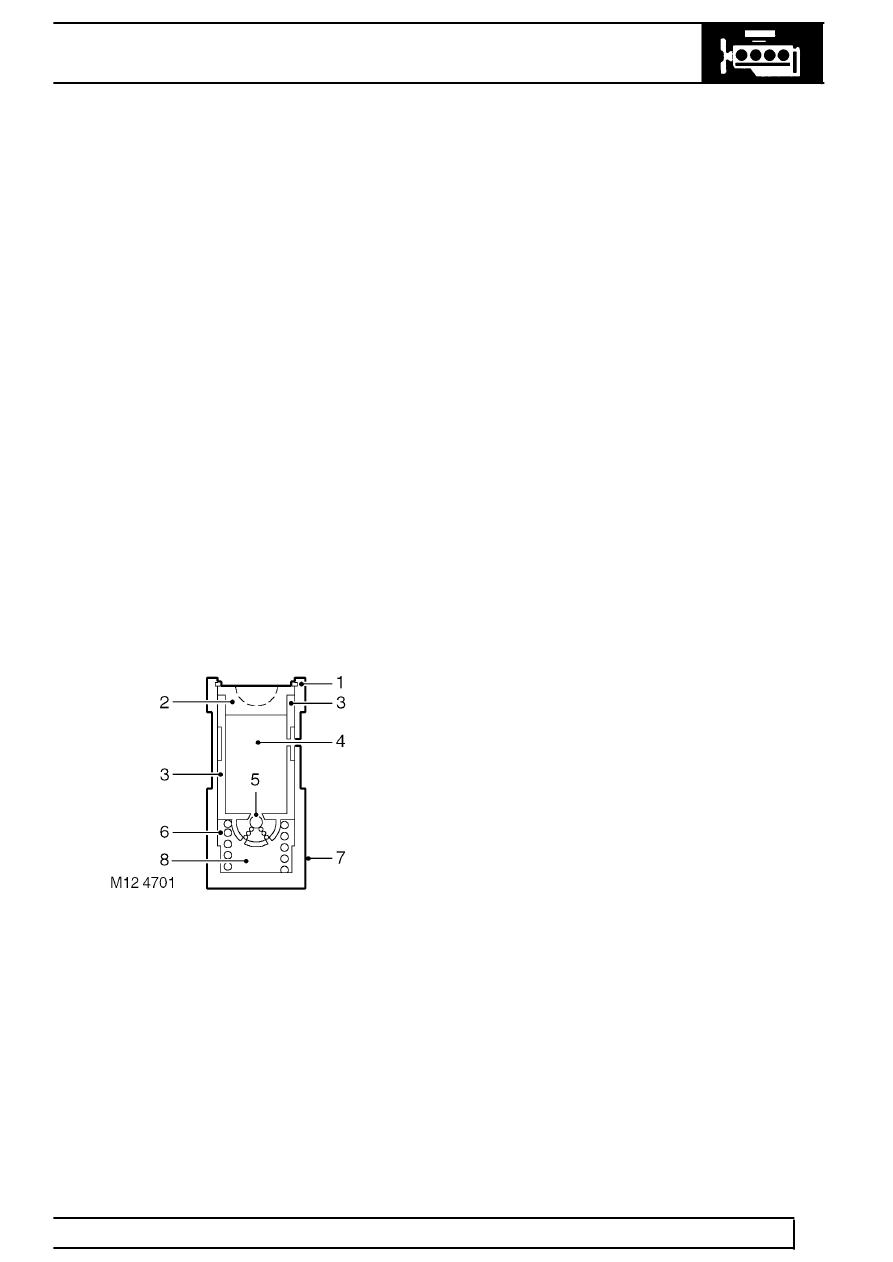Range Rover P38

LAND ROVER V8
9
DESCRIPTION AND OPERATION
Oil is drawn from the sump through a strainer and into
the oil pump via the oil pick-up pipe. Pressurised oil
from the pump passes through the oil cooler mounted
in front of the radiator and returns to the full-flow oil
filter element. Oil from the filter passes into the main
oil gallery and through internal drillings to the
crankshaft where it is directed to each main bearing
and to the big-end bearings via numbers 1, 3 and 5
main bearings. Excess oil pressure is relieved by the
oil pressure relief valve. An internal drilling in the
cylinder block directs oil to the camshaft where it
passes through further internal drillings to the
hydraulic tappets, camshaft bearing journals and
rocker shafts. Lubrication to the pistons, small ends
and cylinder bores is by oil grooves machined in the
connecting rods and by splash.
Oil pressure switch
The oil pressure warning light switch registers low oil
pressure in the main oil gallery on the outflow side of
the filter. Whilst the engine is running and oil pressure
is correct, the switch is open. When the ignition is
switched on or if oil pressure drops below the
pressure setting of the switch, the switch closes and
the low oil pressure warning lamp located in the
instrument pack will illuminate.
Hydraulic tappets
1. Clip
2. Pushrod seat
3. Inner sleeve
4. Upper chamber
5. Non-return ball valve
6. Spring
7. Outer sleeve
8. Lower chamber
The hydraulic tappet provides maintenance free, quiet
operation of the valves. This is achieved by utilizing
engine oil pressure to eliminate the clearance
between the rocker arms and valve stems. When the
valve is closed, engine oil pressure present in the
upper chamber, passes through the non-return ball
valve and into the lower chamber. When the cam
begins to lift the outer sleeve, the resistance of the
valve spring, felt through the push rod and seat,
causes the tappet inner sleeve to move downwards
inside the outer sleeve. This downwards movement
closes the non-return ball valve and increases the
pressure in the lower chamber sufficiently to ensure
that the valve is fully opened by the push rod. As the
tappet moves off the peak of the cam, the non-return
ball valve opens thereby allowing the pressure in both
chambers to equalize. This ensures that the valve will
be fully closed when the tappet is on the back of the
cam.
Crankcase ventilation
A positive crankcase ventilation system is used to
vent crankcase gases to the air induction system.
Gases are drawn from the left hand rocker cover to a
tapping in the throttle body. An oil separator is
incorporated in the hose connection stub pipe in the
right hand rocker cover, gases from this connection
are drawn to a tapping in the inlet manifold.
